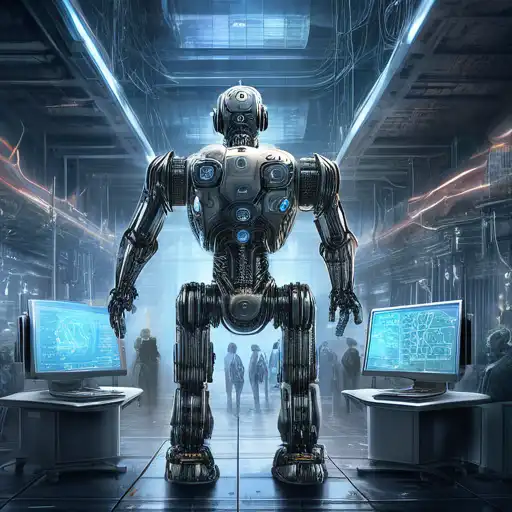Introduction to AI and Machine Learning
In the rapidly evolving world of technology, Artificial Intelligence (AI) and Machine Learning (ML) stand out as two of the most groundbreaking developments. While often used interchangeably, these terms represent distinct concepts with unique applications and implications. This article delves into a comparative study of AI and ML, shedding light on their differences, similarities, and how they're shaping the future.
Understanding Artificial Intelligence
Artificial Intelligence is a broad field of computer science focused on creating systems capable of performing tasks that typically require human intelligence. These tasks include problem-solving, recognizing speech, and making decisions. AI can be categorized into two types: narrow AI, which is designed to perform a narrow task (e.g., facial recognition), and general AI, which can perform any intellectual task that a human can.
Understanding Machine Learning
Machine Learning, a subset of AI, involves the development of algorithms that allow computers to learn from and make predictions or decisions based on data. Unlike traditional programming, where humans write explicit instructions, ML models improve their performance as they are exposed to more data over time. ML is behind many of the services we use today, including recommendation systems like those on Netflix and Amazon.
Key Differences Between AI and Machine Learning
While AI aims to simulate human intelligence across a broad range of tasks, ML focuses on enabling machines to learn from data. Here are some key differences:
- Scope: AI encompasses a wider range of technologies and applications, whereas ML is specifically concerned with data-driven learning.
- Dependency: AI systems can operate without ML, using predefined rules, but ML requires data to learn and improve.
- Flexibility: ML models adapt and improve over time with new data, while traditional AI systems remain static unless manually updated.
How AI and Machine Learning Work Together
Despite their differences, AI and ML often work hand in hand. ML provides the learning mechanisms that enable AI systems to improve their performance without explicit programming. For example, an AI-powered chatbot uses ML to understand and respond to user queries more accurately over time.
The Future of AI and Machine Learning
The integration of AI and ML is driving innovation across industries, from healthcare to finance. As these technologies continue to evolve, we can expect more sophisticated applications that further blur the lines between human and machine capabilities. The potential for AI and ML to transform our world is immense, but it also raises important ethical and societal questions that must be addressed.
For those interested in diving deeper into the world of AI and ML, exploring data science and emerging tech trends can provide valuable insights into how these technologies are being applied today and what the future may hold.
Conclusion
AI and Machine Learning are two pillars of modern technology that, while distinct, complement each other in creating intelligent systems. Understanding their differences and how they interact is crucial for anyone looking to navigate the future of technology. As we continue to explore the possibilities of AI and ML, their impact on society and industry will undoubtedly grow, making now an exciting time to be involved in these fields.
